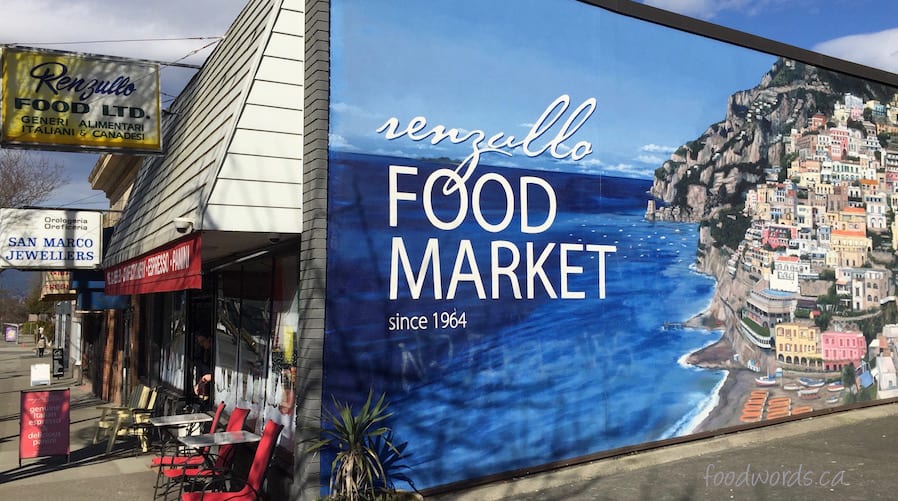The Renzullo Lessons is a deconstruction of what a store like this can teach big grocery.
I work at Renzullo Food Market two days a week. I don’t do anything fancy – price food, put it on the shelves, face, apologize for not speaking Italian even though this is Vancouver, Canada.
When I first started I just wanted to be in a food store and be with customers. I like food-buying customers. They shop, they cook, they eat. What else matters?
The Little Store that Does
Renzullo’s is an old-school Italian market. Small. Every Canadian city and town once had similar stores. Then post war (that would be W.W. ll) big grocery seduced us, and because we like new and shiny, we followed their siren. Usually away from town, with no trees, but lots of blacktop.
But Renzullo’s survived. They recently celebrated their 55th anniversary. Happy Birthday to you! It’s still in the same family. The same floor boards, the same cross above the door on the way to the back, the same generous spirit. The Italian community shops there, as they always have, but other neighbourhood people have made it theirs, too. And they are just as welcome, just as respected.
Big food would say they can’t be Renzullo’s because Renzullo’s is small. But they are wrong. Obviously, nobody can be like the owners, Mirella and Franco, who have an abundance of heart and humanity. Yet some things do translate. The first lesson is…
Loyalty
Supermarkets should be jealous of Renzullo’s loyalty. They have loads of it. And none of it comes from a loyalty card program.
By my own account (so completely non-scientific) maybe 98% of the people who come into Renzullo’s are repeat customers (the best kind). They come back again and again because it makes them feel good. It’s that simple. How? Surprise – the human touch.
Staff talk to the customers. We treat them as the individuals they are. In marketing this talking is called engagement. All that means is being interested and chatting (not chatting-up, which is British for hoping to get laid). We are human and humans are social creatures. Chatting is part of that. We like it (and some never give up on the chatting-up thing).
We let our personalty out. Customers like that staff have thoughts. I try to speak Italian packaging. This is always good for a short language lesson. They hear me struggling with (and mangling) a word like orecchiette (a chewy cut of pasta meaning little ears because that’s the shape – sort of) and they help.
We listen. Most customers like to talk (some too much). At Renzullo’s they tell us about their grandkids, their uncle’s passing, their garden, their mother, whether to use garlic and onions together in a sauce, their sore feet…
And the Most Important?
We say hello, goodbye, and thank you. Helloing and goodbying dominate the soundtrack at Renzullo’s – over the soccer game playing on the TV, over the conversation about cars, over the story about a nephew’s marriage. In this way it’s very much like a Japanese restaurant with their hellos and goodbyes – except noisier. And it’s a big part of staff expectations. All day long Mirella and Franco, without loosing a beat in their conversation with a customer, say hello to someone who has just walked in, and thank you and good bye to someone leaving.
Teach this and you set your staff up for any future job. It’s doesn’t take a lot of imaging be genuinely thanked in a supermarket. Yet, more than any other thing, being made to feel good about yourself is why people return.
The Deal
Someone once told me a deal is only a deal when both parties feel it’s a deal. I think this is the way things are at Renzullo’s. We don’t simply take customer’s money in exchange for goods; we make customers feel worthy and special. Because they are.

